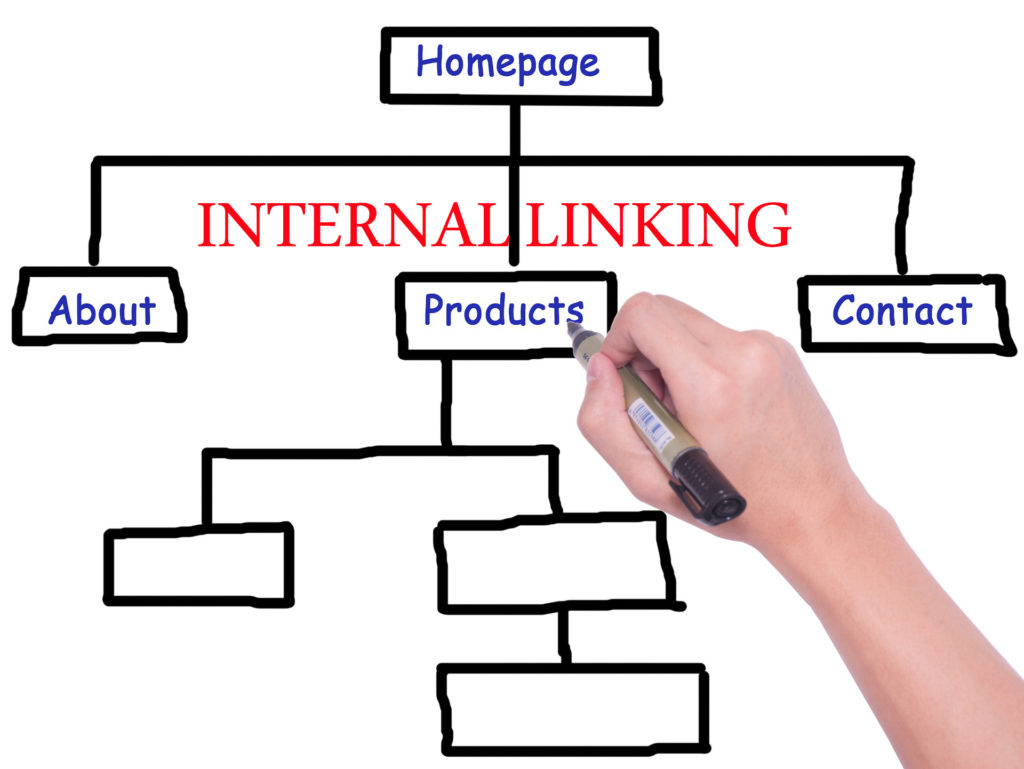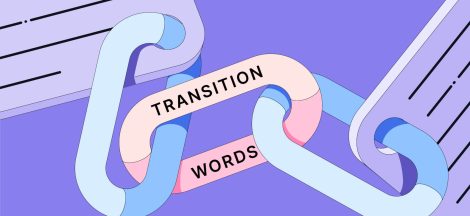Internal linking is a term used to describe the links within one website or blog. I have been hearing about internal linking from many SEO experts and read many amazing posts about it. I have concluded that internal links play a major role in ranking a website or blog.
Later in this post, I will be telling you all the Pros of making internal links to your website or blog. Let me give you some good examples of websites that are ranking on the Google first pages like shoutmeloud.com, Neilpatel.com, backlinko.com, and many others are there. Even if you can check my blog Tricky Enough where you are currently reading this post, I am also doing proper internal linking.
And I am sure that while reading on my blog or even on this post you will notice that there are enough internal links that are related to this topic only.
What is Internal Linking?
Internal links are links that bind a website together. In simple words, we link the related content to the topic in a page or post to make it more helpful and understandable to the reader. When we make links on a single domain only using different posts and pages, then that can be known as internal linking. But when the links are from other domains or domain links pointing to our website are known as outbound links.
Why do Internal Linking?
There are various reasons to create internal links on a website or blog, like
- Navigation to the related posts becomes a lot easier, and we can grab proper information without looking at external sources.
- Helps to make a good architecture and hierarchy of a blog or website.
- The best thing, according to me that this can do; is to increase the page authority of the posts and pages on the website and also help to rank on SERPs as quickly as possible.
The first two points are good, but we should focus on the third point because according to the third point, doing internal linking can help us to boost Page authority as well as Domain Authority. If you do not know the difference between Page Authority and Domain Authority then should read about it. Creating internal links could even help us to improve our Alexa Rank early because of the increased traffic and decreased Bounce rate of our website.
Do Search Engines Prefer Internal Links?
Yes, Search Engines like Google, Bing, and others good search Engines highly Prefer internal links. You can check a post on link architecture by Google Blog does Google check the anchor text of the internal links?
According to the above two links, Google loves internal links and considers them to be the best technique for SEO. So, Internal linking has become an important part of SEO, and internal links can help us to rank on Google SERPs and increase Domain Authority.
How should you do Internal linking for Perfect SEO?
1. Create more and more good content.
The first question that comes to the mind of bloggers and webmasters is how they can create internal links.
So, My Answer to them is to focus on creating lots of content. More content means that you can make more internal links. Less content means fewer internal links, so create content that is related and can be easily interlinked together. Grab one Niche and start writing a series of topics about the same niche. Even the readers like reading the content on one complete topic. Like I have written lots of SEO content, I have written a post about “A complete guide to SEO” and have internally linked the other related posts to the same post, thus making the best and navigable to the readers. You can do the same type of thing to do proper internal linking and better SEO.
2. Use anchor text wisely.
When we do the off-page link Building, then we do not use the same anchor text as the keyword or the title of the post. So, the same is true with the internal links.
You should not use the same anchor text while making the internal links on your Pages. I will recommend you use the different synonym words or LSI keywords for the internal linking. Using the same keyword to link the same page or post will not be considered wise.
3. Create deep links.
Focus on creating deep links.
Deep links mean, making links in the website’s posts and pages that are old enough. Even the new internal links help a lot but linking a new post to the old post helps to get a good page authority in a very short period and as a result of that, the post can rank on Google SERPs as quickly as possible.
And also do not make more internal links to your domain page or home page. Google already knows that your home page is connected to the other pages and posts of your blog. And even avoid linking the Contact Us page again and on your pages. So, Avoid interlinking your Home page or domain name again and again.
4. Use those links which Interest the readers of the post.
What If I am writing a post on SEO and in the same post I do some internal linking, and many of the links are not related to the SEO, the links are related to development, marketing, and selling? So, this post with bad internal links is not going to rank, and even the readers are not going to enjoy it because the links they are getting in this post are different than the posts they are reading. According to my opinion, this kind of post reaches nowhere but the end of Google SERPs.
The only thing I want to make you understand is to create those links that are related to your post. Google’s Rank Brain algorithm is good at this and detects this kind of mistake in a matter of seconds once crawled. So, if you are writing about SEO, interlink content that is related to SEO only, like On-page SEO, Off-Page SEO, link building, etc.
5. Links must be relevant.
Relevant means that the internal link that you are making must make the current post more valuable and knowledgeable. Linking irrelevant content to your post may destroy the proper message that you want to give to your readers. And according to me doing this kind of thing can increase your bounce rate. More importantly, it must interest your readers, and above that, the link must pass a valuable source that must make the visitor read the linked content on your post and help to decrease the bounce rate of your website or blog.
6. Do not make the internal links Nofollow.
Nofollow links are those links that are not indexed by Google and pass no link juice. Nofollow links were introduced by Google in the year 2005 to avoid spamming. If you are making the links Nofollow for the other website which is not trusted even by Google, that’s a good SEO technique, and you are taking your safe side.
But if you are making your website links Nofollow then it is the biggest SEO mistake that you are making, and following this type of technique can hurt the SEO and ranking of your website. I will recommend you keep the links Dofollow while doing internal linking
7. Do not overdo the internal linking.
When I entered the field of SEO and internet marketing, from then until today, I heard that content is king and that somehow it is true. As in the first point, I mentioned that more internal links could be created only if we have more content. So, Content plays a major role always, but it does not mean we can link our whole or half of the websites doing the internal linking.
We must make reasonable links to a blog post or a web page. Overdoing, can spoil our SEO and ruin the reputation of the website. According to the above points, internal links must be relevant, related to the post, interested in the content readers, and pass valuable knowledge and information.
Moreover, making a long list of links in the content can irritate or confuse the reader. Like sharing the same types of content in the post in a row one by one.
Conclusion
Internal links have always been a part of SEO, and in the coming years, they will be. I do believe that the above seven tips that I have shared will help you to do internal linking properly.
If you have any Questions or Queries, please feel free to ask, and I will get back to you as soon as possible.






 Using Content Marketing to Boost Organic Traffic
Using Content Marketing to Boost Organic Traffic
If some one wishes expert view concerning running a blog afterward i suggest him/her to visit this weblog, Keep up the pleasant job.
Hey Robin, your blog presentation is very awesome and the information you have mentioned is also very nice. Thanks.
Hello Sir, thank you for this post, I am new in the blogging field and your blog is very useful for me.
Hello Sir, your blog is very useful and attractive. Thanks for the blog.
Hey Robin, thanks for sharing your post your blog is very informative for me and I will surely take care of the points you have mentioned above.
Hi Robin.
Even I had that confusion is it okay to have more than 3 to 4 internal link because back in days doing more internal linking was the issue but now I am noticing if you do internal linking even 10 to 20 time it does not hurt. I am sure internal linking help distribute your link authority to other pages.
Hi Frank,
It is good to have internal links.
Hey Robin,
You just share awesome things to do SEO in a short way. I am thinking to update my old website and I am researching on my website which thing to do most importantly and I got an idea. Thanks for your relevant content.
Hi Robin, is there any limit of relevant and contextual internal links from a single post to other posts?
Wikipedia seems to be the master of internal linking 🙂
Hi Arnab,
Yes, there can be a limit but use of appropriate links in the post make it a good post and it also depends on how big the size of the post is.
Hi Robin,
You shared a great and timely reminder for any bloggers on the topic of internal linking. I totally agree with you that when the quantity of content in a blog increases , there is more chances of adding internal links if the content is related to each other. Glad to see Harsh Agarwal commenting here. Truely, he is an inspiration for anyone in the blogging field.
Best regards
Reji Stephenson
Hi Reji,
Thanks for being here. I really appreciate your commenting.
Hey Robin,
Great guide on internal linking. But, Backlinks are also most important factor for SEO. Getting a lot of backlinks with relevant anchor text is the good way of improving your search engine ranking. Isn’t is? and it’s great if you explain about Backlinks too. By the way, It’s an awesome blog post. i found it very useful. you have explained very well.
Thanks for sharing such great post.
Maria.
Hi Maria,
I am glad that you liked my post And I have already shared about the backlinks and you can check here.
And Thanks for your comment.
Hey Buddy,
Such a knowledgeable article it is!
To flow the PageRank of your Master Blog post to another blog post, you should interlink your older blog posts to master post.
But remember that both posts are related to each other. These link will acts as an internal link to another older posts so it will receive some of PageRank Juice (visitors from the master post).
It is always important to have DoFollow links, otherwise PageRank will not flow.
Regards,
Anjali Desai
Hi Anjali,
I am glad that you like my post.
Keep visiting.
And have a good week ahead.
Great guide on internal linking, this would definitely be helpful for someone looking to increase their pagerank. Thanks for the post!
Internal link helps in improve the relevancy & contextual score of the topic. It’s a vital aspect of on page SEO. Great points Robin & glad to see you mentioned ShoutMeLoud.
Hi Harsh,
I am glad that you dropped a comment on my post. And surely, If I am following you then in future I will be giving your references too.
Thanks for being here.
Have a good week ahead.
Easy does it on the internal link building side of things Robin. I’m digging your advice. I link in a bit here and there, usually picking older, robust posts to both drive traffic to old posts but to appease the Google gods too. Going light is key. A few links here and there, relevant at that, is more than enough. Definitely avoid linking to your homepage because as you said, Google already knows about your domain link.
Hi Ryan,
I am glad you liked my post and will dig my advice.
Thanks for being here.
Have a good weekend.
Thanks Robin for the Quick response.
I think I read that line is some of the top Indian bloggers pages. Anyways thanks for the apt reply.
Have a great week ahead.
Best
Philip
Hi Philip Sir,
No Problem. Thanks for being here.
Have a good week ahead.
Hi Robin,
A very timely post. A lot of things you shared with connected links. Thanks.
Hey I still remember a telephonic talk with you sometime back regarding the importance of internal linking, i started doing for some and i could taste the results well. But in the recent time i read in one of the post that we should limit such linking to a maximum of 3 or 4 is that correct? I have noticed that a more links shared even in some of your posts, will this give a bad effect? Of course I read point # 7 wherein you mentioned about overdoing, but in that case what is the maximum and what is the minimum? LOL
Yes, as you said more internal links are not a good trend and it may irritate even the readers. LOL
Pl clarify.
Thanks
Best Regards
Philip
Hi Philip Sir,
I have seen Harsh Agrawal putting more links than any other blogger from his own website, and his website’s DA is above 60. So, I think if we are doing the internal linking in a good way without linking the unwanted links, then we can have a good number of links in the post.
3 or 4 links can’t be a limit; we can add more links to make the post more informative (also it depends on the size of the post).
And Also Google in the year 2009 through Matt Cutts spoke that the internal links should not exceed more than 100 internal links. I am writing a post on “how many links we can place in a post or page?”. And will share that soon.
Regards,
Robin Khokhar